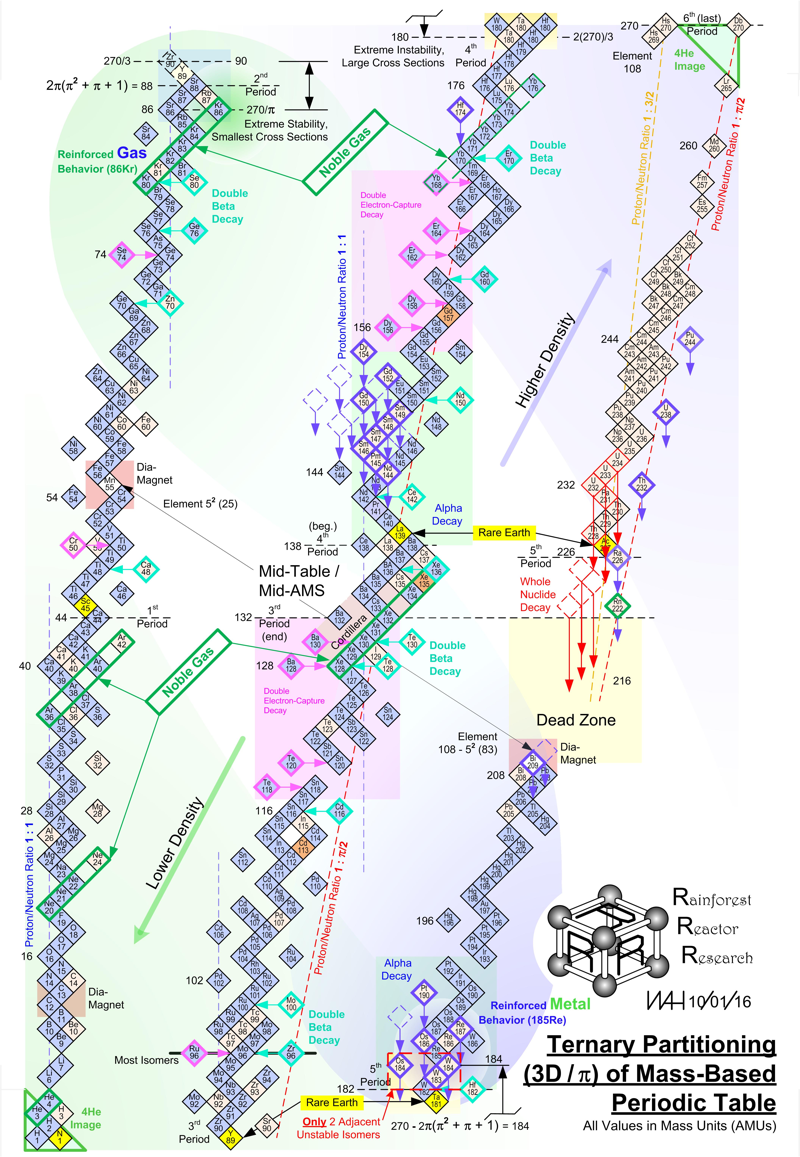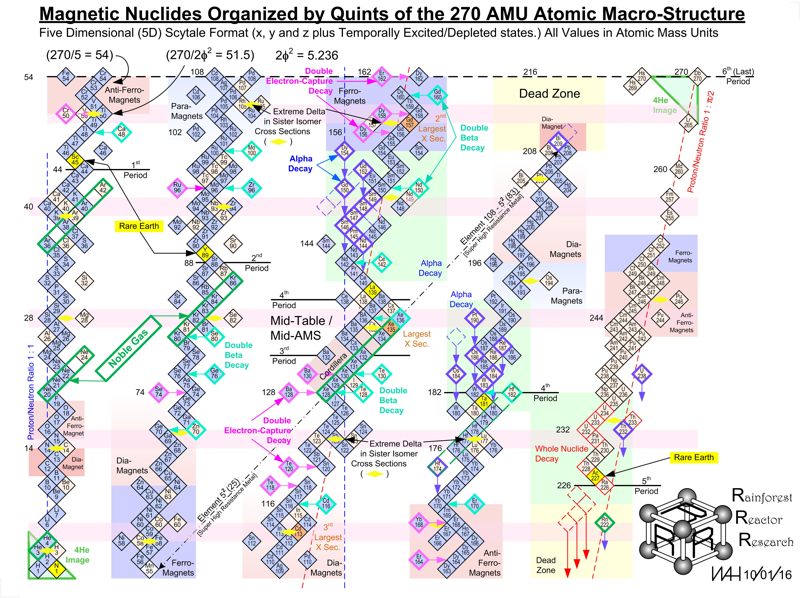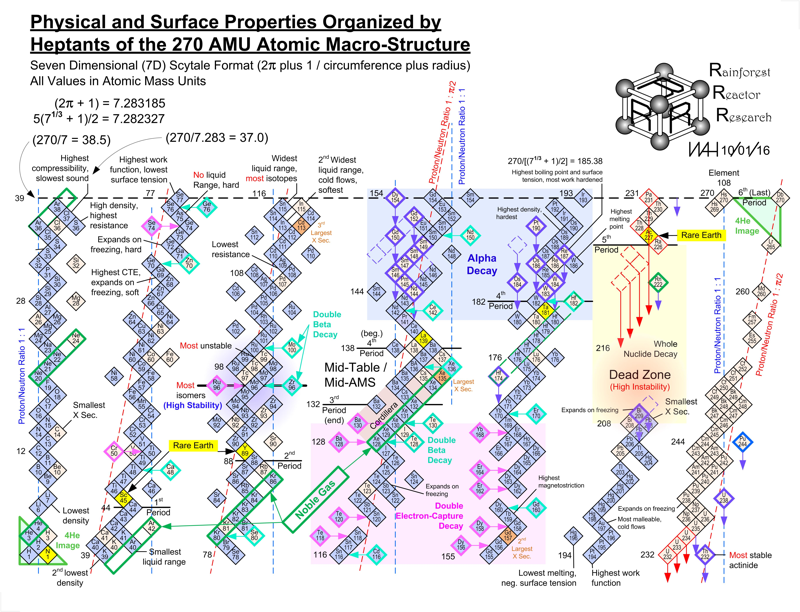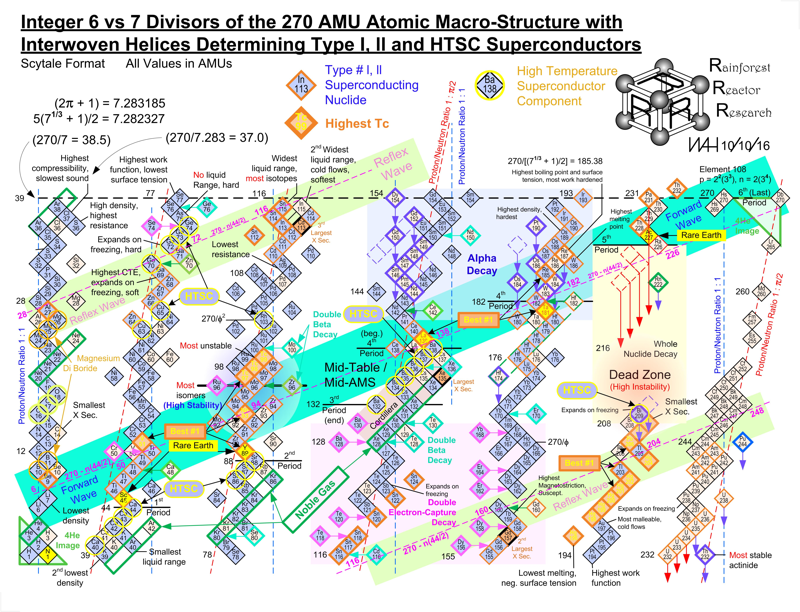Periodic Table |
 |
 |
 |
 |
 |
 |
 |
The INTERNET Database of Periodic Tables
There are thousands of periodic tables in web space, but this is the only comprehensive database of periodic tables & periodic system formulations. If you know of an interesting periodic table that is missing, please contact the database curator: Mark R. Leach Ph.D.
Use the drop menus below to search & select from the more than 1300 Period Tables in the database:
- SEARCH:
- By Decade
- By Type
-
Pre-Selected
Best Four Periodic Tables for Data All Periodic Tables by Name All Periodic Tables by Date All Periodic Tables by Reverse Date All Periodic Tables, as Added to the Database All Periodic Tables, reverse as Added Elements by Name Elements by Date Discovered Search for: Mendeleev/Mendeléeff Search for: Janet/Left-Step Search for: Eric Scerri Search for: Mark Leach Search for: René Vernon Search for: Electronegativity
-
By Year
2020 2019 2018 2017 2016 2015 2014 2013 2012 2011 2010 2009 2008 2007 2006 2005 2004 2003 2002 2001 2000 1999 1998 1997 1996 1995 1994 1993 1992 1991 1990 1989 1988 1987 1986 1985 1984 1983 1982 1981 1980 1979 1978 1977 1976 1975 1974 1973 1972 1971 1970 1969 1968 1967 1966 1965 1964 1963 1962 1961 1960 1959 1958 1957 1956 1955 1954 1953 1952 1951 1950 1949 1948 1947 1946 1945 1944 1943 1942 1941 1940 1939 1938 1937 1936 1935 1934 1933 1932 1931 1930 1929 1928 1927 1926 1925 1924 1923 1922 1921 1920 1919 1918 1917 1916 1915 1914 1913 1912 1911 1910 1909 1908 1907 1906 1905 1904 1903 1902 1901 1900 1899 1898 1897 1896 1895 1894 1893 1892 1891 1890 1889 1888 1887 1886 1885 1884 1883 1882 1881 1880 1879 1878 1877 1876 1875 1874 1873 1872 1871 1870 1869 1868 1867 1866 1865 1864 1863 1862 1861 1860 1859 1858 1857 1856 1855 1854 1853 1852 1851 1850 1844 1843 1842 1838 1836 1831 1830 1829 1825 1824 1817 1814 1813 1811 1808 1807 1804 1803 1802 1801 1800 1798 1794 1791 1789 1787 1783 1782 1781 1778 1775 1774 1772 1771 1766 1753 1751 1748 1735 1718 1700 1690 1687 1682 1671 1669 1624 1617 1520 1000 -300 -450 -800 -1000 -2000 -3500 -3750 -5000 -6000 -7000 -9000
| Year: 2016 | PT id = 731 |
Harrington Periodic Tables
So we start this effort tabula rasa (without preconceived ideas).
1) All atoms have a default "common denominator" structure at 270 mass units, irrespective of the element under discussion. Therefore, no elements seen as wisps and glints past this point are of consequence. Ergo, the bizarre stability of Dubnium 270.
2) This common structure is divided up by the exact same divisors as are the electron orbitals - i.e. the prime numbers of 2, 3, 5, and 7.
3) Pi as a divisor produces its own, unique and dominating organizational patterns.
4) Each of these sets of plotted nuclide "boxes" use identical formats, but are arranged in vertical columns based on the set of 270 AMUs being divided by these prime numbers. So the 5D Table is 270/5 or 54 AMUs per vertical column/"tower".
5) Each system reinforces unique elemental parameters. The system based on 3/Pi, and its second "harmonic" at 6/2Pi reflects physical properties. The 2Pi configuration almost exactly emulates the "conventional" / Mendeleevian element-based table, except the periods are based upon mass not element count, and these periods do not organize in rows of 18 elements, but rather rows of 44 mass units. The organization/configuration of this default structure is: Pi(Pi^2 + Pi + 1) = 44 This is the primary physical default structure of the periodic table and spectrum of elements, as projected in 3D space, and as perceptible to humans.
6) 5D determines everything with magnetic properties. This disproves every single theory that attributes electron shell behavior as determining magnetic parameters. Clearly here we see that the nucleus is "calling the shots", with electron orbitals conforming as driven. The various red and blue shaded boxes are found at extremes of top and bottom.
7) The system of 7D determines most of all physical parameters of surface and molecular behavior. Here we see surface tension, density, softness and hardness, malleability, boiling and melting points and a few other behaviors. This system of correlation is fully unknown to conventional theory. Notice how superlative parameters bunch at the top and bottom of this configuration.
8) When this system of 270 mass units is divided by 12, for 22 mass units per period, the periodic cycle rate precisely correlates with known Type 1 and 2 elemental superconductors. The physical correlations between periodic repetition at 22 mass units, the 270 count system, and superconductors is also completely novel and not compatible to conventional BCS theory. The correlation between this 22 count system and the three largest cross section nuclides known to man (113Cd, 157Gd and 135Xe) is also completely heretical, however mathematically symmetrical and perfect it may actually be organized.
9) The center portion of this common 270 count structure is named the "Cordillera", for the habit of multiple parallel mountain ridges sharing a common alignment. This area is profoundly affected by Pi-based organizations. The very center at 135Xe indicates that the overall table should terminate at element 108 Hassium at 270 mass units. This has a Proton/Neutron ratio of 3:2. This actual nuclide has very poor stability, unlike Dubnium 105 with 270 mass counts. This nuclide has a ratio of precisely 1:Pi/2, indicating the entire table describes a spectrum of mass organizational states spanning the integer ratio of 1:1 (Deuterium) to 3:2, then on through to 1:Pi/2. Current accepted atomic theories concerning "Islands of Stability" are ridiculous.
WAH
Click on the image to see the full size version
 |
 |
 |
| What is the Periodic Table Showing? | Periodicity |
© Mark R. Leach Ph.D. 1999 –
Queries, Suggestions, Bugs, Errors, Typos...
If you have any:
Queries
Comments
Suggestions
Suggestions for links
Bug, typo or grammatical error reports about this page,please contact Mark R. Leach, the author, using mark@meta-synthesis.com
This free, open access web book is an ongoing project and your input is appreciated.



